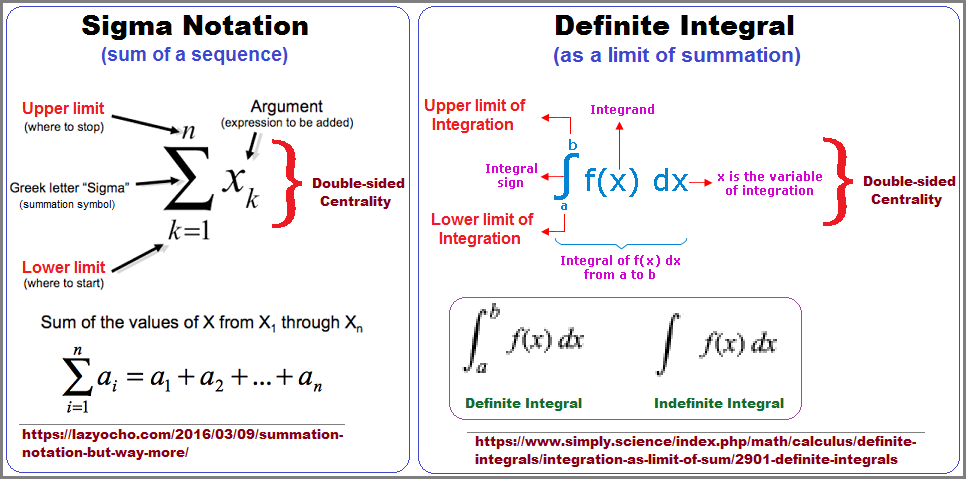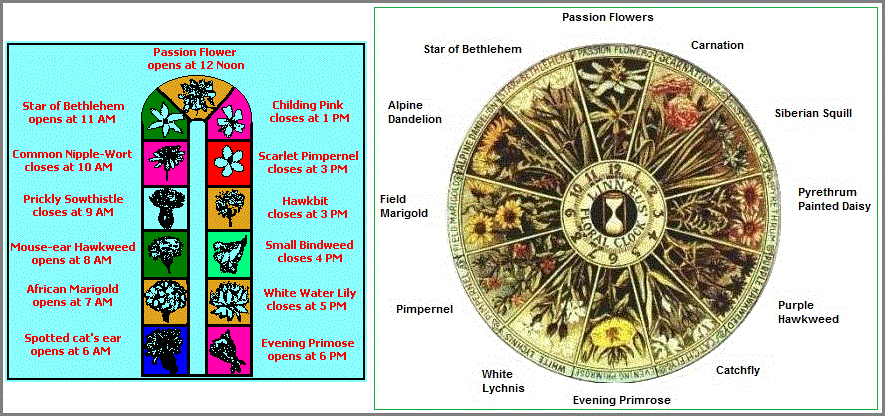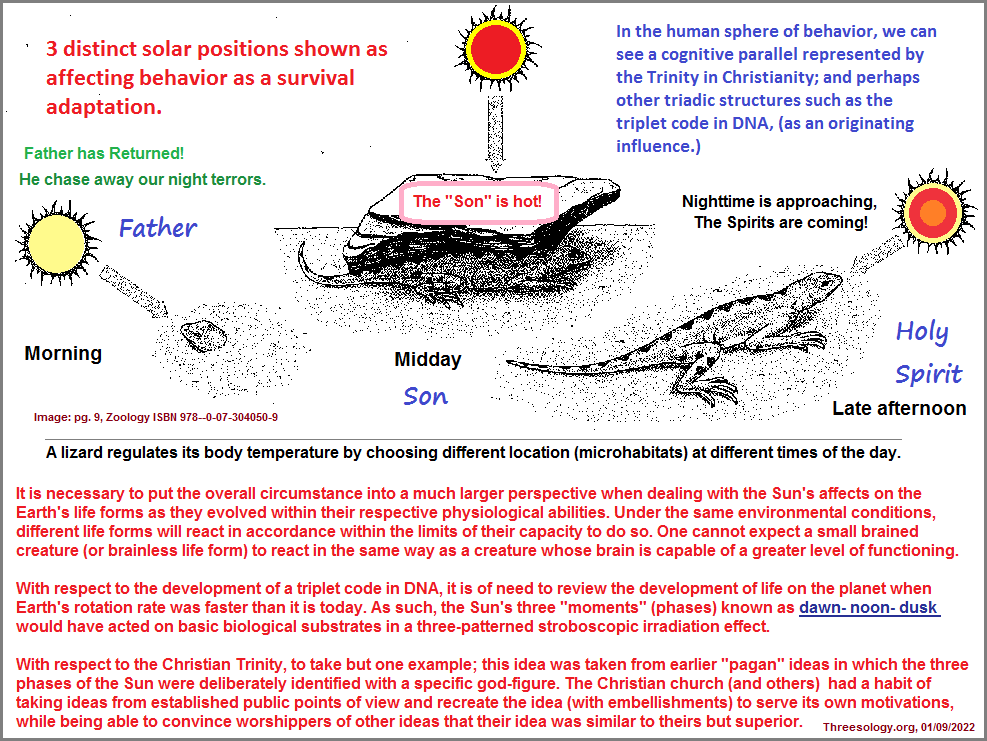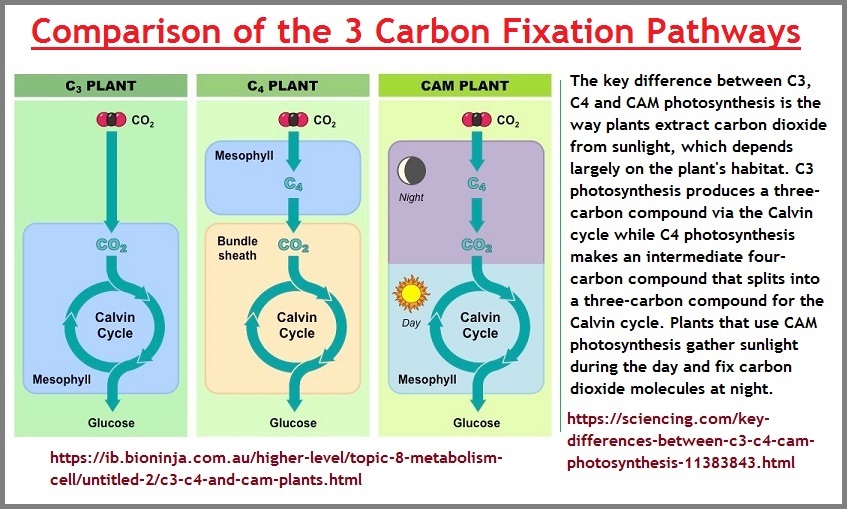8th page
Progressive Thinkers as of 12/1/2022
|
| ||||||||||||||||||||||||||||||||||||||||||||||||||||||||||||||||||||||||||||||||||||||||||||||||||||||||||||||||||||||||||||||||||||||||||||||||||||||
Philosophers are like any other professional who do not want to be confronted by a situation they think requires years of training, only to find that there is a simpler way... that anyone can learn a "higher consciousness", a more complex logic... an easier system of deductive and inductive reasoning than that which has become overly embellished to create the impression that such a thinking activity requires a particular type of effort; when in fact we see multiple everyday people enabled to perform a Rubik's cube puzzle at breakneck speed. Some puzzles, such as those occurring in physics, in Mathematics, in designing the next generation of computers require particular types of thinking because they are puzzles designed as they are, and presented with a particular picture on the outside of the box to sell the item as a must-have product. In very many cases, the opposite is true. Professionals do not want to go out of their way to introduce others into their profession because it would increase a level of competition they may not be prepared to deal with... particularly if it is an idea which is describing a "Science of Philosophy" distinct from the routine flip-flopping action of turning the idea into a "Philosophy of Science" whereby Philosophy is not put on the spot and generally prefers to hide behind the apron of other subjects as a defensive gesture against having to accept responsibility for itself. Describing philosophy as a "Philosophy of Science" is not the same as the 3-patterned expression "Science of Philosophy". It simply shows that Philosophy is not a science as it is presently practiced, and refuses to strike out on its own. It is much like those who attached themselves to the crowd adopting an air of sophistication by being accepted as one of the aristocracy simply because they were invited to an enduring party by those claiming themselves to be royalty, like the Queen of Mathematics, or simply, the Queen of the Sciences. Philosophy has played the part of a courtier and indentured servant for much too long.
The centrality may be either/or/and a stabilizing factor/force or having to be stabilized. If it is an occasion where all three share a similar level of power, position or provinciality, then we can see an atomic structure. The "1- 2- Many" is a generality able enough to illustrate any atomic particle configuration and in fact... in the linear format of "1 → 2 → Many" can be visualized representing a single, double and (3 or more) multi-dimensional structure. For example, the often used "shell" or "planetary" configuration for the structure of an atom can be seen by altering one's vantage point of perception... one of which is to reverse the order such as a "Many- 2- 1" formula, or alternate the positions such as expressed by the configuration of "2- 1- Many", etc...
We can even use a triple "many- many- many" derivation or a "2- 2- 2" or "1- 1- 1", so long as it is understood these characters are generalities. In fact, a single particle moving at a very fast speed could give the impression of being "many" or be interpreted as a singularity that is not fixed, and therefore has an energetic "pacing/flying about/or running into the cage" type of behavior.
In an effort to disrupt such a conflict which can bring about social discord... even to the point of a Revolution, is that some type of wrench may be intentionally or fortuitously thrown into overall machinery of different "1- 2- Many" patterns beginning to conflict. In some cases a war will suffice. At other times it has been due to some epidemic like the Black Plague, Spanish Flu, or Covid 19. In other instances there was an economic upheaval, changes in laws, increase in taxes, some severe environmental condition, socially impacting legal activity, disruption in gas supplies, food supplies, toilet paper shortages, journalistic manipulations of public attitude, etc.... All such things contribute to some level of disrupting prevailing "1- 2- Many" practices: Where the "1" describes the lower limit- or fundamental bottom line or- origin. The "2" is quite frequently described in terms of procedure, like a life-style, business S.O.P., or some commonality/ normalcy of routine which may incorporate an active dualism such as a "what if..." state of mind resulting in some measure of thought-of preparedness, safety, precaution, etc., which articulates an unrealized ability to change... even to flip-flop attitudes and activities if need be. The "Many" is the upper limit which might be viewed in terms of a great expectation, the greater part of one's efforts or financial investment, and some imagined ultimate goal... at least until it may be reached whereby a different model of the "1- 2- Many" may well be evolved to fit the new circumstances. However, it may not be the goal that is unreachable, but that the middle equation one is using to keep them on their path is an arithmetical value and they need to adopt an Algebraic, Geometric or Calculus level of solving their particular equation for them... and not think that someone else's methodology is appropriate as well. Some people do not learn well unless they are subject to hardships and hard-knocks or one failure after another. Some companies start best by being started in garages, basements, attics, out of one's vehicle, etc...
From another perspective, one might visualize the "1- 2- Many" scenario as a math procedure. For example, an upper limit might be articulated along with a lower limit, but the path to get to the higher and stay away from the lower may be expressed in a complicated life style (resembling a complex calculus), or a simple life style (resembling basic arithmetic). The Centrality is the larger proportion algorithm (method) one uses in their life style of activity in an attempt to reach "the answer" (which is the upper goal or limit) and not fail to reach it (thereby not being able to stay away from the lower limit as a guide in this particular equation).

When someone speaks of doing "Pure" Mathematics, this is the same as someone performing activities which are thought will help them achieve "the answer" (some lofted intellectual position akin to enlightenment or superior consciousness) for a specific question, or even one not particularly well articulated. The path to get to a person's "higher or purer" state of mind is the equation being tried out, though there is no actual proofing method or axioms being used. Such ideas are often in a state of flux, like someone who "fudges" the numbers on a tax return so as to get back a "higher" return. All philosophies, all religions, all clubs, gangs, etc., have rules and observances which members are supposed to comply with, because that is how "the equation" is routinely performed in order to achieve an expected answer, which does not often equate with the best answer to be achieved. One's lifestyle, one's training, one's gender, one's age, one's language, one's vocabulary, one's music preference, one's diet, one's sleep patterns, etc., may not be the best equation for reaching one's preferred goal... or upper limit. The upper limit being thought of in a given context may actually be unrealistic and altered in order to create a better context so that a particular goal (upper limit) can be achieved. In very many instances, the "equation" being used is counter-productive... not necessarily in harming a person, but in keeping them stationary, spinning their wheels so-to-speak. This can be seen in multiple cases of those who choose a particular life style thinking it is THEY WAY, THE TRUTH, THE LIFE best suited for their particular interests, but it is that which is most readily available to them in their social context or they have been persuaded by someone, or even themselves to try out a given life style (equation), typically at a great cost or even greater sacrifice.
Some people are astute enough to realize when they are in the wrong context (environment, job, relationship, etc...) in order to achieve a goal that keeps gnawing on them, and those in their environment are better seen as obstacles. For example, a person wanting a film career has to be close to those who are in the filming business. Likewise for those wanting to become a performing singer. In many cases, the advice from one's friends, one's family, one's associates, one's co-workers, one's relatives, one's neighbors, etc., only serves to create obstacles, regardless of how well-intentioned they are. Some in fact may want to set you up for failure, because they want someone to spend time with them in the misery of themselves having not reached a person upper limit in the equation(s) they were involved with trying. However, it should be noted that some people who have reached a goal, a once-defined upper limit such as getting a college degree, come to find out that it is no magic wand. It doesn't provide you with the lifestyle you imagined a degree was going to provide you with. In many cases, such people go back to school to get another degree and may even uproot their lives to move elsewhere, so that a given degree can be applied to the context in which such a degree is a desirable attribute to have.
In a sense, I am speaking of a "higher philosophy" that will be useful to those whose mind (by whatever route) have reached a certain level of consciousness that is standing at the precipice of a different vantage prominence from which to perceive a very different vista than those who, by their own right and own way, have also reached a point of departure from their old way of thinking to a more enlightened one. Reaching a "Higher Consciousness" and "Enlightenment" need not be defined in metaphysical, spiritual or such philosophical terms they are appreciably unrealistic. While it is alright to dream, one must usually take a practical route, use a tried and true equation to reach a goal. If one is a dreamer, then they need to dream up an equation which will assist them in reaching their dream. It is fine. Dream all you want but also dream up the best route, the best equation so that an honest answer is reached. If you prefer to conceal the steps in your equation by way of some excuse or distraction or deflection of the question put to yourself or put to you by others, then you must ask yourself what are you trying to hide from yourself and why? Test your own theories, your own assumptions and become the best Devil's Advocate you can be to yourself. If your self-consciousness is getting in the way, or some suspected unconscious creature, then confront them. However, if you think you need some so-called professional intervention, remember that they too can be wrong for you. They too often have an ulterior motive not necessarily conducive to assisting you to your particular goal... since they are in a similar position that a priest, minister, guru, and so-called other "Enlightened" people are. All of them are in the position they are because it is their niche which they have carved out to make a living for themselves. Though this is not to say that many can not be of any help, sometimes there are those who truly must pave, forage and blaze their own trail because they are pioneers. The only problem with those who may think they are a pioneer, do not want to accept the fact that their goal may not require nor have a position open for a trail blazer. Many jobs which appear to be someone's ultimate goal are held by those who have come to realize the position is much like a routine job... a routine in which others describe as being non-routine. Non-routines often conceal the presence of a very real mediocrity.
The "1- 2- Many" philosophy is an adaptable generality that can provide those who are consciously prepared, with a path to a higher consciousness of realization. Some people have goals that are more suited for an adaptable generality which provides a flexibility which was needed by humanity as it evolved into different terrains. Most philosophies and religions are too strict in how one is able to think and act. This lead to a severe consequence in the early development of those religions that were started by business-like entrepreneurs selling a product called Jesus or the Christ, or Jesus Christ, or the anointed one, or the Saviour, or the Son of Man, or the Son of God, and used multiple other types of word-devised packagings to sell a product that would enable a select few to create a system of thought by which money, title, social position and power could be achieved, that was not possible if such people stuck with the common equation of pursuing a livelihood by working in the fields, becoming a laborer, or attempt to join the very tightly guarded ranks of the nobility. Such entrepreneurs were those whose upper limit of achieving their desires required the adoption of a new equation which offered a better equation to the one the masses were using at the time. The same goes for all established religions and philosophies in use today. The entrepreneurs of a New Religion, a New Philosophy, a New Age, a New Consciousness, a new Life, etc., offer a different game plan of the same underlying "1- 2-Many" pattern. Even Nature uses it. The DNA structure expresses it, just as does particle physics and Mathematics.
However, the "adaptable generality" can appear to be so flexible to some that it comes across their perception like a swinging rope bridge across a divide where the wind is howling and the depth to which exists below is so very deep, that if you where to trip over your feet, make some misstep, and you were to fall, you might never return. However, if I may use a metaphor ascribed to a religious story involving a purported "loss and found" scenario, the story of Lazarus might be told in this way: (You might not recover unless of course there is some figure like Jesus who can "bring you back to life" from your social ostracism (which might well occur if you were to adopt a new belief) as he did the Biblical Lazarus from his "entombment" of darkness or obscurity... that is, his death is viewed by some as a symbolic one meaning he was excised (for whatever reason) from the society he was connected with and thus suffered a "social death" that was extremely important to have in a small community against the ravages of a violent world during that era), that is if I am permitted to exercise a contour of engaging in a philosophical metaphor. By being released by Jesus who assisted in his return, a feat that was extremely unusual, Jesus was thought to be an important person because important people received him as such.

The early Christian church began to suffer a crisis in its early inception by trying to ostracize many of the pagan beliefs, but found that it was better to bring them back to life and incorporate them into the increasing system of beliefs (so as to have a larger following from whom tithing payments could be secured by way of supported illusions and rationalizations); by altering the names of such beliefs and how the pagan views were to be practiced with a Christian church flavoring, garments and ceremonialism. One of the beliefs has to do with Solar worship involving the three phrases customarily labeled as dawn- noon- dusk. These are 3-phases or moments in one sun that have been relabeled as 3 persons in 1 godhead. The origin of the Christian Trinity comes from a "pagan" Nature belief in the Power [Omnipotent], (En)-light-(enment) [Omniscient], and engulfing presence [Omnipresent] character of the Sun. One of many problems with the Trinitarian belief is the fact that its three-phases are on a path to fuse together if it can be believed that the Sun will expand to engulf the innermost three planets as it burns out and the Earth's rotation continues to deteriorate... not to mention the moon moving further away.
The present day belief in the Christina Trinity is adulterated conception of an earlier Nature-based "worship"... (instead of "worship" one might say "emphasized observance") of the Sun's three phases by earlier groups of people who were mostly illiterate and look for "signs" in the environment to supplement "signs" derived from the observations of patterns seen in human-caused expression such as reading tea leaves, entrails, wrinkles or blemishes on the body, etc...). In any event the point I want to make is that a primitive mind can see a pattern in nature which later becomes symbolized to hold a greater meaning than it should, such as the swastika, whose origin appears to have been a accumulative work-up of the Big Dipper during the two Solstices and two Equinoxes. In other words, if you make a combined sketch of the position of the Big Dipper during the two Solstices and two Equinoxes you will see a crude image of the Swastika that was "cleaned up" by an artist who removed the 7 star positions. Like wise, if you intellectually reference the three phases of the Sun into a single referenced, you have a 3 -in- 1 conceptualization which the Trinitarians believe in. The "three" as in the Trinity concept, can be used as a person's individual "Many" that they think is a goal (The 3rd, "Many" position of cumulative interests) for their specific enlightenment.
In order to appreciate how influential the radiant Sun (and Moon) can have on people, you have to toss out preconceived notions of how smart people are as opposed to how primitive their minds were in the deep past. One way of doing so is to see the effect it has on plants and animals. Plants, such as flowers, can "follow" the Sun such as a Sunflower. And need I mention Chlorophyll for basic organisms? Let us look at a flower clock that used to be wildly popular because different flowers reacted to different positions of the Sun:

The scientific name for such responses to sunlight is called Photoperiodism:
(Photoperiodism is) the functional or behavioral response of an organism to changes of duration in daily, seasonal, or yearly cycles of light and darkness. Photoperiodic reactions can be reasonably predicted, but temperature, nutrition, and other environmental factors also modify an organism's response. In animals, the regular activities of migration, reproduction, and the changing of coats or plumage can be induced out of season by artificially altering daylight. Birds, for example, have migrated north in the winter after having been exposed to reversed seasonal lighting in laboratories. The manipulation of a specific stimulating period of darkness, which is required by each species for every phase of the migratory process, is an important factor in Photoperiodism. When stimulated by light, an animal's pituitary gland will release hormones that affect reproduction. Thus, the mating season of a species can be made to occur at an unusual time by manipulating daylight. Long periods of light followed by short periods will induce mating behaviour in species that normally breed in autumn (e.g., goats and sheep), while spring breeders (e.g., mink) will start the reproductive process when daylight is increased. Application of Photoperiodism is common in the poultry industry, as daylight affects egg-laying, mating, and body weight of the fowl. ("Photoperiodism." Encyclopædia Britannica, 2013.)
chlorophyll: any member of the most important class of pigments involved in photosynthesis, the process by which light energy is converted to chemical energy through the synthesis of organic compounds. Chlorophyll is found in virtually all photosynthetic organisms, including green plants, prokaryotic blue-green algae (cyanobacteria), and eukaryotic algae. It absorbs energy from light; this energy is then used to convert carbon dioxide to carbohydrates.
Chlorophyll occurs in several distinct forms: chlorophylls a and b are the major types found in higher plants and green algae; chlorophylls c and d are found, often with a, in different algae; chlorophyll e is a rare type found in some golden algae; and bacterio-chlorophyll occurs in certain bacteria. In green plants chlorophyll occurs in membranous disk-like units (thylakoids) in organelles called chloroplasts. The chlorophyll molecule consists of a central magnesium atom surrounded by a nitrogen-containing structure called a porphyrin ring; attached to the ring is a long carbon–hydrogen side chain, known as a phytol chain. Variations are due to minor modifications of certain side groups. Chlorophyll is remarkably similar in structure to hemoglobin, the oxygen-carrying pigment found in the red blood cells of mammals and other vertebrates. ("chlorophyll." Encyclopædia Britannica, 2013.)
The latter comment about chlorophyll being remarkably similar in structure to hemoglobin bespeaks of an older origination for human physiological processes than a mere referencing to early animal life. In addition, while geneticists and millions of people interested in Biology look to DNA as if it is a fundamental pattern, they don't conceptualize a 3-patterned environmental event as having had an influence on establishing the pattern-of-three.
The best image I could find which references how an animal reacts to the sun during three different periods of the day is as follows:

Just as going to College does not suit everyone, not all philosophies nor religions. In fact, none of them fit me so I had to develop my own. While it involves the same information as other views, it is a different algorithm of the same numbers and symbols resulting in a different equation, a different statement of the variables. Similarly, while many in Einstein's era were working with the same intellectual variables (energy, mass, speed of light, mathematical formulae, etc...), his mass to energy equivalency formula was just a different way of stating the variables in line with a new way of conceiving the same problem. He was using the same variables, but was restating them based on different conceptualizations. The same goes for other problem solvers in their respective field of interest. And some problems are even solved long before anyone realizes there is a problem or need for a solution! Some people appear to be truly ahead of their time while others are perceived as being more suited for an earlier period of life... if not century and country. Such people may not find any present day religion, philosophy, business, government, science or lifestyle which best suits them. Unless they find a truly flexible means of mentally accommodating themselves to a given setting they find themselves in, conflicts may well ensue... sometimes small, at other times not so small. An example is to come across someone who lives in a Jewish, Hindu, Christian, Buddhist, Islamic or other strict religious environment whose mind is not attuned to the religious practices but has no way to escape except through some practice that comes into conflict with the dominant of their culture. Although they might otherwise thrive quite well if they were not forced to believe in the dominant religion or its observances, the entire culture may have an expectation of compliance, so that even jobs and schooling prevents their development of a higher consciousness which exists beyond the limitations of their culture's dominant orientation.
Though all perspectives, all beliefs have a measure by which a person might achieve some personal realization of a definable "higher consciousness" (or other named primary goal), most of them do not have a realistic history that outlines the logical necessity for establishing themselves as a sequentiality ... and much less using such a belief because it is thought to be fully entrenched in an unshakable footing/foundation of truth. They may well be using the wrong belief system for obtaining their specific goal, and are relying on a belief that has not real history of value for them. The "history of origination" which some rely on to substantiate the claims and views in their belief, in their philosophy, may be based partly on hearsay, partly on some supposed historically articulated Anthropological reference, and partly on an incorporated tradition of a believed in truth; but no actual verified or verifiable rhyme or reason for its existence actually exists, other than as an opposition to some former belief (thought to be bad or incorrect or less than then the value ascribed to it by others, and who origination itself may have been constructed in response to a developed superstition, fear, wild imaginings, perceived threat, pain, injury, poising, disease, starvation, death, birth, unexplainable weather phenomena, retardation, missed opportunity, "might makes right", recurring anomaly, etc...
The "1" and "Many" are the extremes and the "2" is a middle position, though it also is an extreme. All ideas and activities are expressing this formula with different words and symbols, though there may not be words or symbols being used in some occasions and exhibit what appears to be a moving target of flexibility. If a person simply says "one/many" or left/right or up/down, etc., they are not only expressing extremes, but also their centrality... their "2-ness"... their own dichotomy. Two extremes placed together create their own center of focus. Metaphorically it is like holding a sandwich and taking a bite out of some place between one's hands. In the syllogistic expression of Major Premise- Minor Premise- Conclusion, the "1- 2- Many" shows itself by having two extremes and one centrality. And it matters not if someone says the "1" (as a quantity of number identity) is not an extreme nor is it a "Many"... but that "0" (Zero) and Infinity are; this is mere quibbling with semantics. Anywhere in between is the central position, even if you think that there can be no centrality between an extreme of "0" as a Nothingness and "Infinity" as a Nameless entity... and therefore without being able to name it (as if it were a Rumplestiltskin) and thus you can not have some relative power over it like encountering some "uncertainty principle" perspective now used in Physics... as an expressed extremism and therefore "power" entity of an exceptional intellectualization unable to be usurped as if it were some king or other royalty.

While the concept of "excluded middle" might come to mind when confronted by two extremes which appear to have no centrality, a look at a definition of the "excluded middle" might be helpful for some:
In logic, the law of excluded middle (or the principle of excluded middle) states that for every proposition, either this proposition or its negation is true. It is one of the so-called three laws of thought, along with the law of non-contradiction, and the law of identity. However, no system of logic is built on just these laws, and none of these laws provides inference rules, such as modus ponens or De Morgan's laws.
The law is also known as the law (or principle) of the excluded third, in Latin principium tertii exclusi. Another Latin designation for this law is tertium non datur: "no third [possibility] is given". It is a tautology.
The principle should not be confused with the semantical principle of bivalence, which states that every proposition is either true or false. The principle of bivalence always implies the law of excluded middle, while the converse is not always true. A commonly cited counterexample uses statements unprovable now, but provable in the future to show that the law of excluded middle may apply when the principle of bivalence fails.
- Modus ponens: a valid form of argument in which the antecedent of a conditional proposition is affirmed, thereby entailing the affirmation of the consequent:If P then Q, and P is true, therefore Q. (Wordweb dictionary)
- The laws that bear De Morgan's name are a pair of dually related theorems that make possible the transformation of statements and formulas into alternate, and often more convenient, forms. Known verbally by William of Ockham in the 14th century, the laws were investigated thoroughly and expressed mathematically by De Morgan. The laws are: (1) the negation (or contradictory) of a disjunction is equal to the conjunction of the negation of the alternates—that is, not (p or q) equals not p and not q, or symbolically ~(p ? q) = ~p·~q; and (2) the negation of a conjunction is equal to the disjunction of the negation of the original conjuncts—that is, not (p and q) equals not p or not q, or symbolically ~(p·q) = ~p ? ~q. ("De Morgan, Augustus." Encyclopædia Britannica.)
- Equivalence Relation: In mathematics, a generalization of the idea of equality between elements of a set. All equivalence relations (e.g., that symbolized by the equals sign) obey three conditions: reflexivity (every element is in the relation to itself), symmetry (element A has the same relation to element B that B has to A), and transitivity. Congruence of triangles is an equivalence relation in geometry. Members of a set are said to be in the same equivalence class if they have an equivalence relation. ("equivalence relation." Encyclopædia Britannica.)
Indeed, some readers may want to argue that there is no absolute zero in terms of temperature where atomic particle behavior ceases, since in doing so the Uncertainty Principle is removed from its extreme position:
(The Uncertainty Principle is a) statement, articulated (1927) by the German physicist Werner Heisenberg, that the position and the velocity of an object cannot both be measured exactly, at the same time, even in theory. ("uncertainty principle." Encyclopædia Britannica.)
Date of (series) Origination: Saturday, 14th March 2020... 6:11 AM
Date of Initial Posting (this page): 1st Jan 2023... 11:21 AM, AST (Arizona Standard Time); Marana, AZ.
